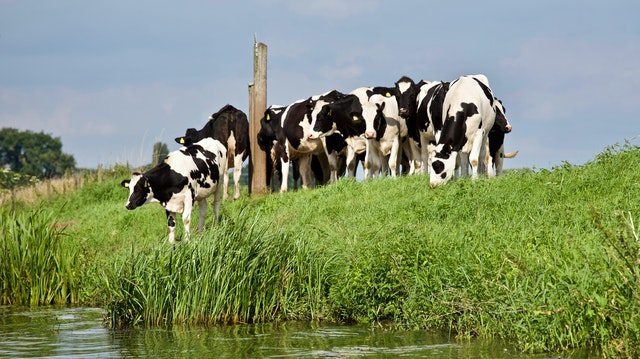Kenya has the highest per capita production and consumption for milk in the region. It makes dairy farming one of the most successful business ideas if you are a starter or practicing cattle farming. However, the sector has many challenges that can wipe your investments. If your goal is sustainable profits, the following tips will make your venture more successful.
Aims of profitable dairy farming;
- Increase the volume of milk production per cow.
- Reduce the cost of disease and pest management.
- Enhance calf maturity rates to get mature milking cows and slaughter bulls.
- Improve the quality and availability of animal feed and fodder.
- Add-value of dairy products to earn more profit per kilogram/litre and reduce spoilage of milk.
You can summarize the above tips into seven tasks: crossbreeding, planting quality fodder crops like oats and corn. Others are making hay and mixing local materials for your animal feed. The rest are milk processing, selling bulls for beef and producing biogas.
Crossbreeding

You will use Artificial insemination (AI) technology to improve the herd-productivity and timely calving. Calves have better disease tolerance which will ensure their survival rates. Do it if you are in an arid county and raising the local cattle breeds like Zebu. They only one litre of milk per day.
The KALRO proposes using the Sahiwal a multi-purpose cattle breed. It can produce 5-10 litres of milk a day. Its crossbreds can give you ten litres daily. Their bulls mature fast, and you can sell them for slaughter diversifying your farm income.
Plant Napier grass
Napier grass is the most reliable animal fodder for small-holder dairy farmers in Kenya. You can harvest it throughout the year for immediate use or store it in silage for future use. However, the old varieties are susceptible to smut and stunt growth that can affect your feeding schedule. The improved types you should plant include the Kakamega 1,2, or 3, Ouma and South Africa. They have quality and more yields per hectare and do well in drier areas.
Grow Fodder crops

Forage production is a common challenge for all dairy farmers. It is now worse because of dwindling pasture lands, droughts and floods that destroy acres of grazing land each year. As a climate-smart (CS) farming practice, we advise you to plant drought or frost tolerant, protein-rich and fast-maturing fodder. According to the latest research by the KALRO, the following are the most nutritious fodder for high milk yields.
- Maize fodder.
- Oats
- Brachiaria Grass
- Fodder Sorghum
- Lucerne (Tagasaste)
- Inter-cropping Desmodium with Napier grass
- Common Vetch fodder
- Sweet Lupin.
- Sweet potato vines
Feed conservation
Preserving fodder is another Climate-Smart farming method for ranchers and herders. You will harvest them when they are most abundant in the wet season and store them for use during the dry season when food and water are scarce. The cheapest method is fermenting fodder using the silage method. Availability of feed will preserve your milk volumes during the dry season are.
- Cassava based Napier grass silage; use wilted chopped Napier grass with wilted cassava leaves and dry or fresh chopped cassava tubers in a ratio of 70:25:5. Ferment the mixture for at least six weeks for best results in airtight bags or containers.
- Use wilted Napier Grass, Gliricidia Forage, and Maize Bran Silage in the ratio of 70:25:5. The fermenting is as above. Cost of making 1 kg silage is about KES 5-10. 5.5 tons can sustain your two cows for three months. each cow eating 30 kg per day.
Feed formulation
The cost of buying a dairy meal is high for many farmers. You can also end up with a fake brand that does not increase milk volumes. To lower your costs, and make sure your animals are safe, use cheap resources like maize and salt to plan animal feed at home. You can make dairy feed and calf weaning diets or milk replacer. Other materials are molasses and urea.
Formal marketing
After observing the above tips, then improve the health of your cows. It will give you more milk volumes to sell. However, if you market it raw to informal traders, you will continue making losses. To get what you deserve, engage in more efficient marketing. You may need to join a farmer cooperative, engage in direct sales to consumers or invest in cheap milk coolers and chillers to store and process your milk to increase its value and shelf-life.
Milk Processing

Milk processing can help you succeed in dairy farming by solving various challenges. These include milk spoilage in glut season, low cost of selling raw milk and short shelf lives for whole processed milk. You can either make cheese, yoghurt or butter.
- Cheese you will coagulate milk and remove whey from it in a vat. Then cut, press, mound and salt the curd to complete its processing. You will spend KES 635 for production and make KES 1200 from it according to KALRO estimates
- Yoghurt You ferment milk at temperatures between 35-45°C. You can add food colouring and flavour to enhance its marketing. You will spend around KES 85.90 per litre, which you can sell for KES130.
- Butter is a fatty product made of 80% fat, water 16% and non-fat solids of 2%. You will require KES 300 as the cost to produce 1 kilogram that you can sell for KES 1000.
Zero Grazing
Additional tips are zero grazing, producing bio gas and making organic fertilizers. Intensive system of production has highest milk production than pasturing cattle. You can use bio gas as clean energy for cooking and other heating needs. Its slurry can be used as clean organic manure.

1 Comment
Pingback: 10 most Nutritious fodder crops you should grow | Agcenture